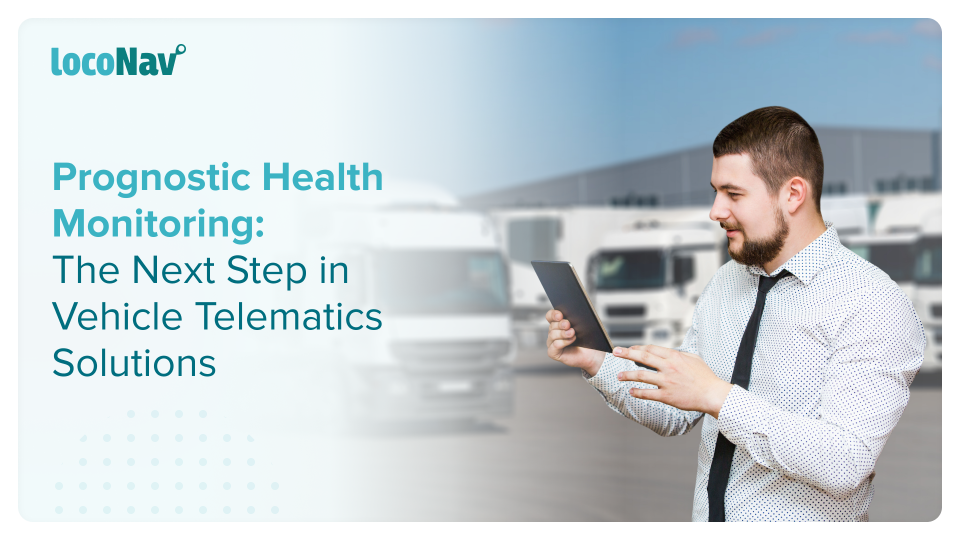

The first thought that comes to mind when we hear the word “prognosis” is healthcare and disease detection. Prognosis in healthcare is continuous surveillance of the disease’s symptoms which can eventually reveal the nature of the illness and its repercussions.
Similarly, prognostic health monitoring of vehicles involves analysing existing and upcoming vehicle health metrics to cut down on maintenance costs and prevent irreparable harm to the equipment or vehicle. This technology has been specially developed for large fleet vehicles. When they experience a mechanical breakdown, their maintenance costs skyrocket and the machine’s activity rate is significantly reduced.
To carry out smooth fleet operations properly and save downtime for large fleet vehicles, advanced machine learning systems must recognise the symptoms early before the real failure. Risk factors can be reduced by identifying parameters connected to driving patterns, fuel efficiency, safety procedures, and damage aspects and addressing the relevant issues.
In this blog, we will discuss prognostic health monitoring in telematics, its limitations and its advantages in-depth.
Make your business more profitable with LocoNav’s Telematics
Why Monitor Vehicle Health?
Large fleet vehicles are used for extended hours. This excessive usage may cause wear and tear issues, resulting in machine failure that takes a long time to fix, resulting in a loss in machine activity rate. When a machine is inspected on a regular basis, especially in manual maintenance, competent labour is required to spot mistakes. This takes a long time to recover from, and the manual inspection may also cause chaos and confusion.
Automation reduces manual work while also lowering the cost of inspections and repairs through diagnostics, enhancing productivity. By collecting vehicle health data, it is possible to figure out malfunctions without the help of a mechanic. And as IT advances, it will be easier to communicate this malfunction information to relevant people.
Key Benefits of Using Prognostic Health Monitoring in Telematics
There are various upsides to using prognostic health monitoring for vehicle telematics. Some of these are:
- Improve system uptime, mission dependability, and safety.
- Reduce the number of maintenance workers, spare parts, and repair expenses.
- Eliminates the need for scheduled inspections.
- Reduce servicing and parts procurement lead times.
- Isolate flaws automatically.
- Reduce or eliminate false alarms.
- Notify users in real time of upcoming maintenance events.
- Prevent potentially catastrophic failures from occurring.
- Detect and monitor potential issues before they cause failure
- Reduce downtime with predictive maintenance.
How Does a Prognostic Maintenance System Work?
A vehicle’s prognostic health monitoring system works by collecting, processing, and storing information received from a vehicle’s sensors.
Step 1: Collecting Data
Data can be gathered from the following sources:
- Internal network traffic – Normal data found on the vehicle during normal operation that does not reflect any prognostic system requests.
- Prognostics network traffic – Prognostic vehicle information can be gathered from the onboard prognostic health monitoring system.
- Requested network traffic – The networks covered here offer information on a request or on a periodic basis. This can be related to emissions or non-emissions. Temperatures, speed, pressure, and fluid levels are examples of variables.
Step 2: Processing Data
The collected data will be processed in accordance with the information, which includes prescribed priority and generated repair databases. If a vehicle is tested and driven in a dangerous region after a repair, the priority and desired action are different.
Step 3: Distributing Data
Once the information has been collected and the findings have been calculated, it is critical to share it with people who can use it. It is critical that the operators do not become overwhelmed with information and that they are correctly prioritised.
What are the Limitations of Prognostic Maintenance?
Essentially, monitoring a component’s degradation and anticipating its evolution allows us to prevent degradation and unanticipated failures from occurring. However, difficulties in implementing prognostic health monitoring strategies frequently arise. This is because of:
- A lack of understanding of the underlying component degradation.
- Difficulty in detecting component degradation with minimal damage, but necessary for just-in-time failure avoidance.
- Lack of sensors with the sensitivity to detect even the smallest degradation.
FAQ
What Are The Advantages Of Tracking Real-Time Device Health Data?
By tracking vehicle health data in real-time a fleet manager or dispatcher can possibly detect breakdowns before they occur. It is also useful for saving money on costly repairs by using predictive maintenance. Real-time device health data will allow for a more proactive approach to vehicle breakdowns and prevent your vehicle and driver from getting stranded.
What Is The Difference Between Diagnostic And Prognostic?
| DIAGNOSTIC HEALTH MONITORING OF VEHICLES | PROGNOSTIC HEALTH MONITORING OF VEHICLES |
| It is the process of determining an operation’s status or ability to accomplish its role. | It comprises determining an operation’s remaining life or time span. |
| Only detects faulty areas. | Both detects and isolates faulty areas. |
| Does not support condition-based servicing. | Supports condition-based servicing. |
| No prediction of remaining useful life. | Prediction of remaining useful life. |
| Unable to detect potentially catastrophic failure. | Catches potentially catastrophic failures. |
